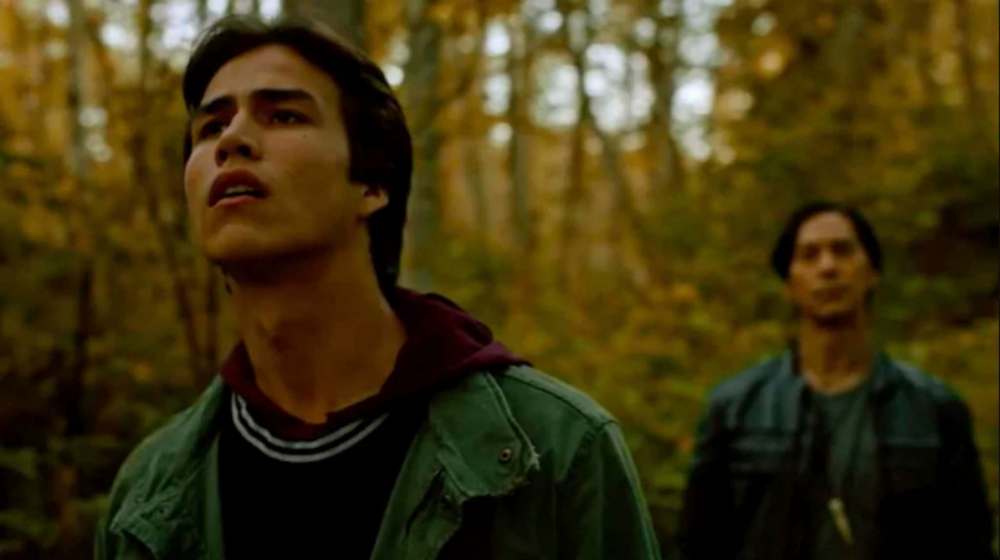Indigenous content ready for new prime-time role
Advertisement
Read this article for free:
or
Already have an account? Log in here »
To continue reading, please subscribe:
Monthly Digital Subscription
$0 for the first 4 weeks*
- Enjoy unlimited reading on winnipegfreepress.com
- Read the E-Edition, our digital replica newspaper
- Access News Break, our award-winning app
- Play interactive puzzles
*No charge for 4 weeks then price increases to the regular rate of $19.00 plus GST every four weeks. Offer available to new and qualified returning subscribers only. Cancel any time.
Monthly Digital Subscription
$4.75/week*
- Enjoy unlimited reading on winnipegfreepress.com
- Read the E-Edition, our digital replica newspaper
- Access News Break, our award-winning app
- Play interactive puzzles
*Billed as $19 plus GST every four weeks. Cancel any time.
To continue reading, please subscribe:
Add Free Press access to your Brandon Sun subscription for only an additional
$1 for the first 4 weeks*
*Your next subscription payment will increase by $1.00 and you will be charged $16.99 plus GST for four weeks. After four weeks, your payment will increase to $23.99 plus GST every four weeks.
Read unlimited articles for free today:
or
Already have an account? Log in here »
Hey there, time traveller!
This article was published 16/11/2020 (1866 days ago), so information in it may no longer be current.
The reviews are in, and CBC’s new TV series Trickster is a hit.
Based on Haisla and Heiltsuk writer Eden Robinson’s bestselling trilogy of novels about an Indigenous teenager with supernatural powers dealing with racism and politics, Trickster has joined the pantheon of popular Canadian shows such as Corner Gas, Schitt’s Creek, Due South, Degrassi: the Next Generation, and Kim’s Convenience. (The CW network has picked up its U.S.-rights.)
The difference, of course, is Trickster is CBC’s first Indigenous-written, scripted, produced, and directed prime-time show.

Most of its actors are Indigenous, as is one-third of the production crew. Filming took place in North Bay, Ont., near Nipissing First Nation.
While some mainstream networks have come close to producing Indigenous shows (North of 60, for example), Indigenous content has never been much of a focus for big Canadian broadcasters. Indigenous content has mostly been produced as “special projects” (such as documentaries) or by focused producers (such as Aboriginal Peoples Television Network), independent artists and production companies.
You could say the same for Indigenous music and mainstream radio stations. Besides the occasional Susan Aglukark or Robbie Robertson song, Canadian stations mostly ignore Indigenous musicians — even when they are best-selling, award-winners like A Tribe Called Red and Tanya Tagaq.
Not anymore, if proposed changes to Canada’s Broadcasting Act take place.
This month, federal Heritage Minister Steven Guilbeault introduced a sweeping update the laws regulating and funding broadcasting in Canada.
While Bill C-10 is mostly meant to address unregulated “online” programming, one section is the inclusion of requirements for all Canadian broadcasters to “reflect the Indigenous cultures of Canada and programming that is in Indigenous languages should be provided within the Canadian broadcasting system.”
This replaces the vague wording in the current act that requires nothing, and lumps Indigenous content within “multicultural and multiracial” programming.
If passed, Canadian mainstream television networks and radio stations will be required to fund, support, and help create Indigenous-led productions. (With networks and stations receiving financial incentives to include Indigenous content, and an inclusion of it in mandated-Canadian content.)
This will bring Canada into line with the United Nations Declaration on the Rights of Indigenous Peoples and the final report of the Truth and Reconciliation Commission of Canada — both of which ask governments to mandate broadcasters to provide Indigenous content to promote diversity, advance healthy relationships, and accurately represent populations.
Most television networks have to support Canadian content in 55 per cent of their yearly programming (50 per cent of daily programming), while commercial radio stations have to play 40 per cent Canadian content.
To qualify as “Canadian content” a certain percentage (often half) of the production and performance of a program or song must be by Canadian citizens or created in Canada.
Soon, some of this will have to involve Indigenous creators or represent investments in Indigenous communities.
It represents a tangible, real commitment to Indigenous creativity and a way to support Canadians in learning, growing, and enjoying Indigenous contributions to this country.
It might also bring the rest of Canada into something Winnipeg and Manitoba are already doing: currently, there is more Indigenous content on radio and television stations here than anywhere else in the country.
While most mainstream networks in the city haven’t made heavy investments in creating Indigenous films, television, and radio programs, it’s worth noting some of the most profitable and widely-watched Indigenous media in Canada is produced in Manitoba. Indigenous journalists are part of most local newsrooms, Indigenous hosts oversee dozens of shows and podcasts, and many major Indigenous music, film, and acting stars come from the province.
A new Broadcast Act is sorely needed, but maybe, just maybe, Manitoba might not notice it as much. Because it’s already happening here.
niigaan.sinclair@freepress.mb.ca

Niigaan Sinclair is Anishinaabe and is a columnist at the Winnipeg Free Press.
Our newsroom depends on a growing audience of readers to power our journalism. If you are not a paid reader, please consider becoming a subscriber.
Our newsroom depends on its audience of readers to power our journalism. Thank you for your support.

